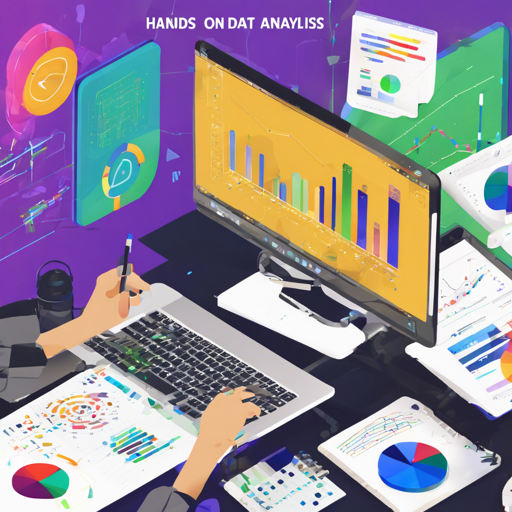Data analysis has become an essential skill in a variety of domains, and mastering it can be a game-changer in transforming raw data into actionable insights. In this blog, we will guide you through the process of using the book Hands-On Data Analysis with Pandas, authored by Stefanie Molin, to equip yourself with powerful data analysis skills using Python’s Pandas library.
Getting Started with Your Data Analysis Journey
This book will introduce you to the world of data analysis by leveraging the Pandas library. To successfully follow along, ensure you have a basic understanding of Python or consult the first chapter for a quick refresher. Here’s what you can expect to learn:
- How data analysts and scientists gather and analyze data.
- Performing data wrangling using Pandas.
- Creating visually appealing data visualizations.
- Applying machine learning algorithms using sklearn.
- Building Python scripts for analysis.
Understanding the Key Concepts Through Analogy
Imagine you are a chef preparing a new recipe. The ingredients you have (data) need to be chopped, mixed, and cooked to create a delectable dish (insight). Just as a chef uses various tools to execute this process—like knives for chopping and pans for cooking—data analysts use libraries like Pandas and NumPy to manipulate data, while visualizing it through libraries like Matplotlib and Seaborn. Each step in your data analysis journey is akin to a step in the cooking process, transforming raw ingredients into a gourmet meal ready for serving!
Structure of the Book
The book is structured into clear chapters, each dedicated to advancing your skills:
- Chapter 1: Introduction to Data Analysis
- Chapter 2: Working with Pandas DataFrames
- Chapter 3: Data Wrangling with Pandas
- Chapter 4: Aggregating Pandas DataFrames
- Chapter 5: Visualizing Data with Pandas and Matplotlib
- Chapter 6: Plotting with Seaborn and Customization Techniques
- Chapter 7: Financial Analysis: Bitcoin and the Stock Market
- Chapter 8: Rule-Based Anomaly Detection
- Chapter 9: Getting Started with Machine Learning in Python
- Chapter 10: Making Better Predictions: Optimizing Models
- Chapter 11: Machine Learning Anomaly Detection
- Chapter 12: The Road Ahead
Troubleshooting Your Environment Setup
While following along with the chapters, you might encounter some challenges. Common issues include setting up the correct Python environment or installing the necessary libraries. Here are some troubleshooting tips:
- Ensure that you have the right version of Python installed (preferably 3.7 or 3.10).
- If you face difficulties during installation, refer to the environment setup instructions in Chapter 1.
- For issues with your virtual environment in Jupyter, consider checking [this resource](https://anbasile.github.io/programming/20170625/jupyter-venv).
For more insights, updates, or to collaborate on AI development projects, stay connected with fxis.ai.
Conclusion
With this guide, you’re well on your way to mastering data analysis using the Pandas library. We hope you find the journey of learning to be enriching. At fxis.ai, we believe that such advancements are crucial for the future of AI, as they enable more comprehensive and effective solutions. Our team is continually exploring new methodologies to push the envelope in artificial intelligence, ensuring that our clients benefit from the latest technological innovations.

